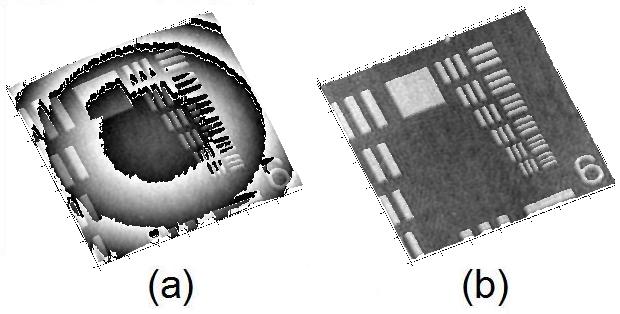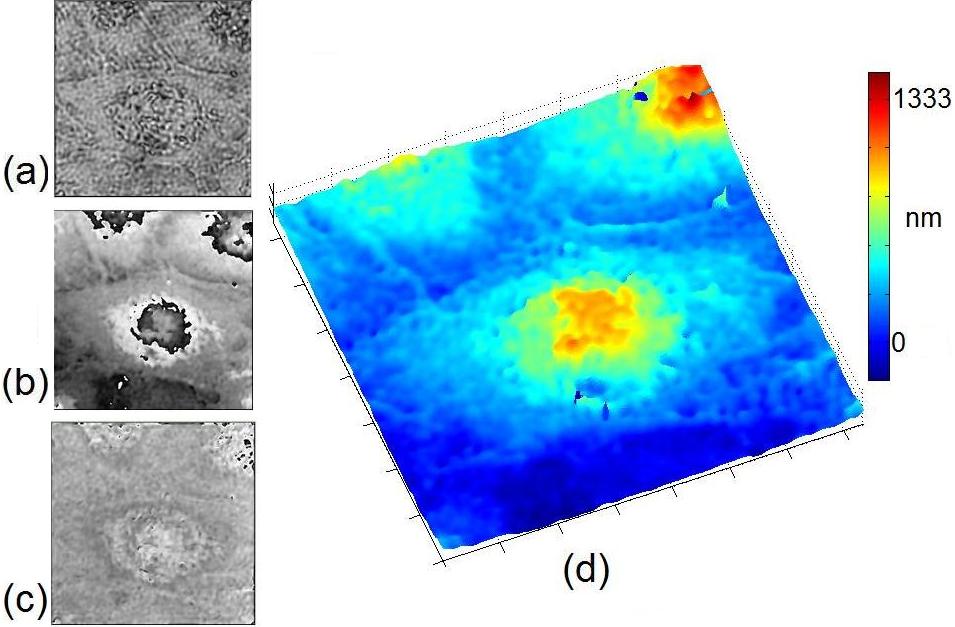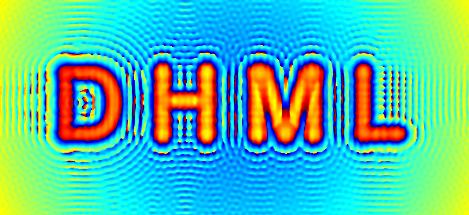We present a phase-imaging technique to quantitatively study the
three-dimensional structure of cells. The method, based on the simultaneous
dual-wavelength digital holography, allows for higher axial range at which
the unambiguous phase imaging can be performed. The technique is capable
of nanometer axial resolution. The noise level, which increases as a result of
using two wavelengths, is then reduced to the level of a single wavelength.
The method compares favorably to software unwrapping, as the technique
does not produce non-existent phase steps. Curvature mismatch between the
reference and object beams is numerically compensated. The 3D images of
SKOV-3 ovarian cancer cells are presented.

Fig. 1. Multi-wavelength digital holography apparatus. The focal length of the lenses L21 and
L22 are 17.5 cm and 10 cm respectively. The beams are collimated between L11 and L21 and
between L12 and L22 and again are collimated after 20x OBJ1 microscope objective.

Fig. 2. Two-wavelength hologram of a USAF resolution target: (a) digital hologram (640x480
pixels) and (b) its Fourier spectrum of the hologram with the red and the green wavelengths
first order components shown.

Fig. 4. The reconstructed phase image of the USAF resolution target (a) without curvature
correction and (b) with curvature correction applied. The images are 174x174 μm2 (450x450
pixels).

Fig. 7. Confluent SKOV-3 ovarian cancer cells: (a) amplitude image, (b) reconstructed phase
for λ=532 nm, (c) dual-wavelength coarse phase image and (d) 3D rendering of fine map. All
images are 92x92 μm2 (240x240 pixels).
|





